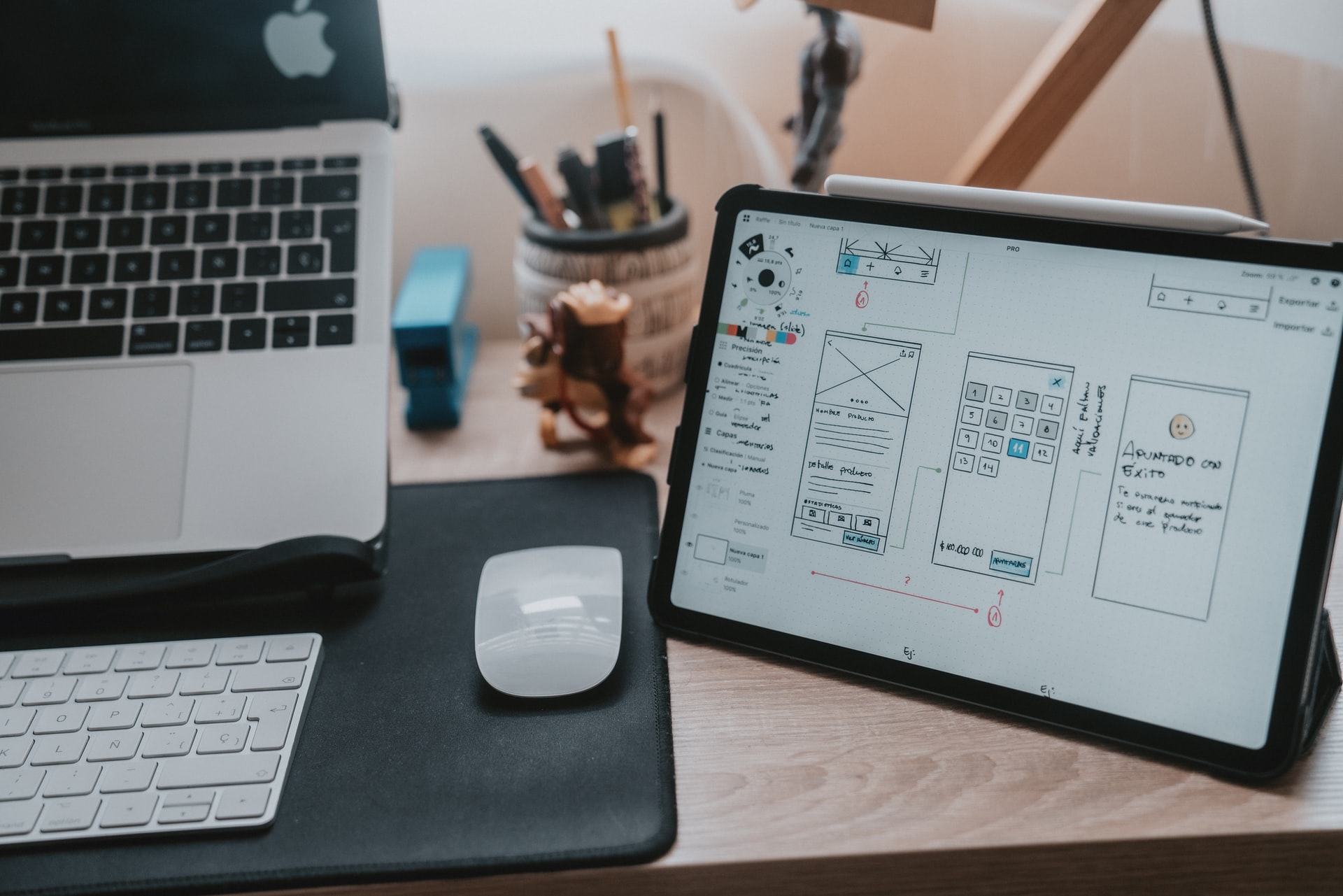Six Leading UI Design Trends To Follow In 2022
UI is an integral part of any product, whether it’s software or physical. A good UI makes your product more user-friendly and easy to use and this is what you need to win in today’s fast competitive world . It has been predicted that apps with intense UI will be the most important factor for success in the next few years. With time people became habituated to using highly productive products; now they want apps with awesome UI also to make their life easier. Top companies such as Microsoft, Google, Apple, Facebook etc are giving maximum priority to aesthetics, as the competition is getting intense every day.
Every year new trends are popping up all around the web. Sometimes it might be hard to keep track of all of them, but you’ll definitely want to read this article for ideas on what will become popular in 2022. In this article we’ll highlight all important UI design trends which may be significant for the next 5 years or so.
Let’s begin!
- Dark mode
Dark mode is simply where all of your web pages turn dark grey. There will be an option in settings where you choose if you want this or not. All black UIs will look dull compared to dark blue interfaces, which is why they will switch to more color-changing effects like red and orange during peak times of activity (i.e., after school). But during off-peak hours when no one is using the internet at all, the websites become a dark grey color.
Highly productive apps like VSCode, Photoshop and other similar apps have a dark mode option to reduce strain on eyes during night time use of such apps. As a result, a lot of people are habituated to using dark mode for productivity purposes nowadays . It has been predicted that dark mode will become a standard feature in many softwares very soon due to increasing user-friendliness and easy to use factor. People often tend to keep their phones lighted always which might lead to bad display of the content on display, and dark mode helps to reduce such strain.
- Advanced micro-interactions
As new UI interactions are introduced over time, people find them easier to understand and use; it’s a common trend seen across different UI interactions of apps. Micro-interactions often define the success or failure of an app and they should be done correctly if developers want their users to like them (e.g: pull down to refresh). Dark mode will allow more focus on these small elements which we see in everyday apps and may provide better user experience by reducing visual fatigue for normal users as well as for those who require more attention towards such details (e.g: designers, programmers).
Micro-interactions are the little things that we see in websites that we don’t really pay attention to, but we know they’re there and that’s what makes it special. For example, when you roll over a flash card and the word changes colors and fonts and stuff like that. One day, someone will come up with an idea where the website actually responds to your behavior when you use it. The best thing about this is that when somebody visits your site for the first time, it already knows them personally because of all of these details they took in when visiting other “similar” sites (because nobody uses their own personal information on any website).
- Metaverse
The metaverse is a possible future concept of interconnected virtual reality spaces. It goes hand-in-hand with augmented reality since this will play an important role in how the metaverse functions in the future. Web design for this type of environment would be many times immersive along with requiring much more real-time computing power than traditional websites do today. Designers should focus on creating interfaces that are intuitive and interactive while closely matching user expectations when it comes to interacting with their surroundings within an augmented reality space connected via the metaverse.
As virtual reality is becoming more accessible, designers are constantly thinking of new ways to implement it into everyday tasks and entertainment. Metaverses can solve that problem by allowing users to do anything they could possibly imagine all within one single platform. Yes, anything, including taking a trip to space or even having a conversation with yourself by using your avatar’s mirror image as someone who looks just like you if he/she was standing right next to you. When it comes to designing a website or an app that uses a metaverse, designers must think about the whole experience from start to finish because there aren’t any splits in the screen for multiple windows.
- Mobile-first design
This term refers to designing for mobile devices before any other platform, including desktop or laptop computers or even televisions connected to the Internet. This approach to design acknowledges that more people will access the Internet most frequently using mobile devices than any other platform, and by designing web content for those devices first, you can create a better user experience knowing most users will receive it in the best possible way.
Mobile usage has become quite popular since smartphones were first introduced; as of now, mobile devices account for 55% of total time spent on digital media and this trend will continue until 2021 before shifting towards web browser usage on desktop/laptop computers making up 42%. Designers and developers had started paying attention to mobile-first strategies and now it’s time to prioritize mobile experience.
- Bold Typography
Following the current flat design trend, bold typography took over user interfaces making headlines and attained lots of attention from product designers and marketers who wanted their products to stand out from competitors’ (e.g: Apple has embraced this style). Since it’s commonly used and it has a great impact on user experience, we believe this trend isn’t over yet and will stay strong until 2022 or until something even bigger comes along.
Fonts will become so bold and illegible that they take up half of your screen. Typography is becoming increasingly popular and designers will take advantage of this by making fonts as big and loud as possible. Be sure to follow guidelines for legibility, accessibility and user-centered design principles before designing your next UI.
- Augmented & Virtual Reality
The use of augmented reality (AR) and virtual reality (VR) is growing exponentially every year as new hardware becomes available. These technologies allow people to experience digital information through a sensory experience, rather than just seeing it on a screen. Microsoft has already launched their Mixed Reality headsets and predicts that more companies will begin developing mixed reality hardware over the next few years. With a growing number of people using smartphones and tablets, mobile-first design – where content is prioritized to work well on smaller screens – will continue to grow in popularity. This means designing with mobile in mind from the start, so features are easily accessible when looking at them on a mobile device.
By 2022, the top UI trends will include augmented reality (AR) and virtual reality (VR). The concepts behind these technologies are not new but it’s only been the past few years that companies have been investing in creating hardware products such as: Google Glasses, Oculus Rift, Microsoft Hololens etc. Augmented Reality takes a real life object or environment and then “augments” it with a computer-generated image or video where Virtual Reality creates an entirely computer-generated environment.
Conclusion
The new year is the perfect time to try out some adventurous website design. If you’re already working on a project, consider how these trends might breathe life into it or help make your company’s online presence stand apart from its competitors! And most importantly: have fun with this – we don’t want anyone getting too stressed about their work situation at home computer desk while they await word-of-mouth recommendations that will come only after people start seeing what great things can happen when designers take risks outside traditional boundaries.
As technology in the world of Front-End development is evolving at a very fast pace, it’s only natural that User Interfaces (UIs) are evolving with them. The following five UI trends are expected to take over the web in the coming years and become even more important in 2022!

Author Bio: Khurshid Alam
Khurshid Alam is the founder of Pixel Street, a web design company. He aspires to solve business problems by communicating effectively digitally. In his leisure, he reads, writes, and occasionally plays a game of table tennis.
What Is WooCommerce Product Slider and Why Your Store Needs It
Why Do Product Images Matter So Much in Online Stores? When someone visits an online store the…
0 Comments9 Minutes
How to Streamline Your Customers’ Shopping Experience?
The goal for any online store is to make shopping as smooth as possible. When visitors move…
0 Comments8 Minutes
Strengthening Brand-Customer Relationships Through Gamified Loyalty Programs
Creating lasting connections with customers has become increasingly vital as the marketplace grows…
0 Comments6 Minutes
How to Use SEO and SEA Together in Search Engine Marketing
In digital marketing, search engine marketing (SEM) plays a critical role in improving online…
0 Comments10 Minutes
Content Marketing Growth Hacks: Real Shortcuts to Drive Traffic
Are you still lagging in content marketing? Sticking to these old strategies seems…
0 Comments10 Minutes
How to Build a Strong Local Following Using Social Media Marketing
In the days of likes, shares, and stories, local businesses have a golden opportunity to create…
0 Comments9 Minutes
Why WooCommerce is the Best Choice for Your Online Store?
WooCommerce stands out as a top option for anyone looking to build an online store. This platform…
0 Comments8 Minutes
How to Use AI-Powered SEO Tools for WordPress eCommerce
SEO is a critical factor in the success of any e-commerce WordPress store. As competition…
0 Comments11 Minutes








